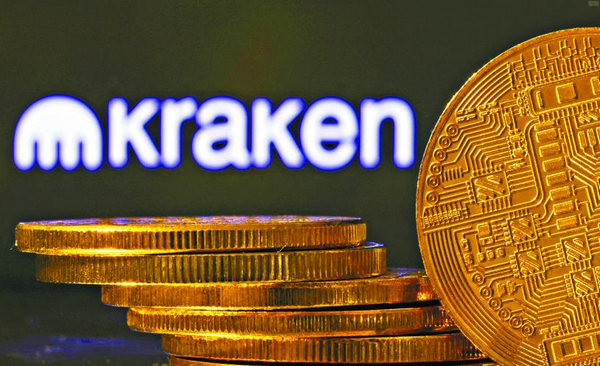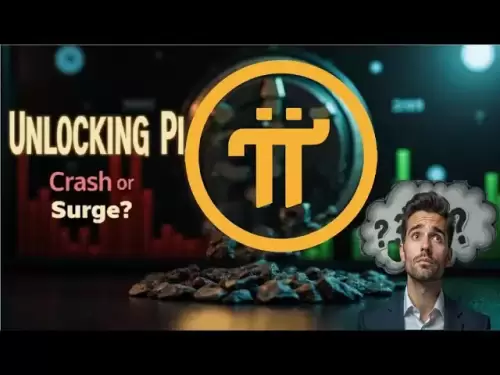-
 Bitcoin
Bitcoin $108,270.9768
2.07% -
 Ethereum
Ethereum $2,489.8066
2.50% -
 Tether USDt
Tether USDt $1.0004
0.01% -
 XRP
XRP $2.2035
0.66% -
 BNB
BNB $661.6608
2.32% -
 Solana
Solana $150.6425
2.13% -
 USDC
USDC $0.9999
-0.01% -
 TRON
TRON $0.2810
0.90% -
 Dogecoin
Dogecoin $0.1645
3.05% -
 Cardano
Cardano $0.5743
4.91% -
 Hyperliquid
Hyperliquid $38.8419
-0.15% -
 Bitcoin Cash
Bitcoin Cash $504.3134
-2.64% -
 Sui
Sui $2.8096
4.35% -
 Chainlink
Chainlink $13.3095
2.21% -
 UNUS SED LEO
UNUS SED LEO $8.9469
0.33% -
 Avalanche
Avalanche $17.9231
3.93% -
 Stellar
Stellar $0.2340
0.74% -
 Toncoin
Toncoin $2.8458
3.21% -
 Shiba Inu
Shiba Inu $0.0...01158
3.47% -
 Litecoin
Litecoin $86.0738
1.94% -
 Hedera
Hedera $0.1507
2.99% -
 Monero
Monero $319.8544
2.31% -
 Polkadot
Polkadot $3.4081
1.95% -
 Dai
Dai $1.0000
0.01% -
 Bitget Token
Bitget Token $4.5645
0.91% -
 Ethena USDe
Ethena USDe $1.0002
0.00% -
 Uniswap
Uniswap $7.2959
5.27% -
 Aave
Aave $272.4623
2.90% -
 Pepe
Pepe $0.0...09680
2.96% -
 Pi
Pi $0.4955
0.78%
How to play Kraken currency-based contracts
To participate in Kraken's currency-based contract trading, traders initiate a Kraken account, fund it through various payment methods, select a desired contract, establish buy or sell orders, and monitor and manage their position strategically to optimize returns and mitigate potential losses.
Nov 20, 2024 at 12:06 am

How to Play Kraken Currency-Based Contracts
Kraken, one of the world's leading cryptocurrency exchanges, offers a variety of trading instruments, including currency-based contracts. These contracts allow traders to speculate on the price movements of cryptocurrencies without having to own the underlying asset.
Currency-based contracts are similar to futures contracts, but they are settled in cash rather than the underlying asset. This makes them a more convenient and versatile trading instrument for many traders.
To play Kraken currency-based contracts, you will need to:
- Open a Kraken account. You can do this by visiting the Kraken website and clicking on the "Create Account" button.
- Fund your account. You can fund your account using a variety of methods, including bank transfer, credit card, and cryptocurrency.
- Select a currency-based contract. Kraken offers a variety of currency-based contracts, including BTC/USD, ETH/USD, and XRP/USD.
- Place an order. You can place a buy order or a sell order. A buy order is an order to buy the base currency (e.g., BTC) at the specified price. A sell order is an order to sell the base currency at the specified price.
- Manage your position. Once you have placed an order, you can manage your position by monitoring the market and adjusting your orders as needed. You can also close your position by placing an offsetting order.
Step-by-Step Guide to Playing Kraken Currency-Based Contracts
1. Open a Kraken account.
To open a Kraken account, you will need to provide your name, email address, and password. You will also need to verify your email address and phone number.
2. Fund your account.
You can fund your Kraken account using a variety of methods, including:
- Bank transfer
- Credit card
- Cryptocurrency
3. Select a currency-based contract.
Kraken offers a variety of currency-based contracts, including:
- BTC/USD
- ETH/USD
- XRP/USD
- LTC/USD
- BCH/USD
- EOS/USD
- ETC/USD
- ZEC/USD
4. Place an order.
To place an order, you will need to select the contract you want to trade, the order type, and the quantity. You will also need to specify the price at which you want to buy or sell the contract.
5. Manage your position.
Once you have placed an order, you can manage your position by monitoring the market and adjusting your orders as needed. You can also close your position by placing an offsetting order.
Tips for Playing Kraken Currency-Based Contracts
Here are a few tips for playing Kraken currency-based contracts:
- Do your research. Before you start trading, it is important to do your research and understand the risks involved.
- Start with a small position. When you are first starting out, it is important to start with a small position so that you can learn how to trade without risking too much money.
- Use a stop-loss order. A stop-loss order is an order that is placed to sell your contract at a specified price if the market moves against you. This can help to limit your losses.
- Take profits regularly. When you are in a winning trade, it is important to take profits regularly. This will help to lock in your profits and reduce your risk.
- Don't be afraid to lose. Everyone loses trades from time to time. The important thing is to learn from your mistakes and move on.
Disclaimer:info@kdj.com
The information provided is not trading advice. kdj.com does not assume any responsibility for any investments made based on the information provided in this article. Cryptocurrencies are highly volatile and it is highly recommended that you invest with caution after thorough research!
If you believe that the content used on this website infringes your copyright, please contact us immediately (info@kdj.com) and we will delete it promptly.
- NEOP and the Meme Coin Mania: A New Era of Crypto Investing?
- 2025-07-02 22:50:12
- SUI Rebound: Analyst Predicts Potential Price Targets for Explosive Move
- 2025-07-02 23:30:12
- Trump, Crypto, and Fortune: A Wild Ride in 2025
- 2025-07-02 23:30:12
- NodeOps, Network, Tokenomics: DePIN 2.0 is Here!
- 2025-07-02 23:35:12
- Dollar Coin Auction Mania: Are These Coins Really Worth the Hype?
- 2025-07-02 23:35:13
- Portugal Embraces Cryptocurrency Cloud Mining: A New Era with GMO Miner
- 2025-07-02 23:40:12
Related knowledge

How to identify the contract value range in combination with the market profile?
Jul 02,2025 at 10:56pm
Understanding the Market ProfileTo effectively identify the contract value range in combination with the market profile, it's essential to first understand what each concept entails. The market profile is a framework that helps traders visualize how price and time interact across a given period, typically a trading day or session. It provides insights i...

How to use the price slope to filter the false breakthrough signal of the contract?
Jun 20,2025 at 06:56pm
Understanding the Concept of Price Slope in Contract TradingIn contract trading, especially within cryptocurrency derivatives markets, price slope refers to the rate at which the price changes over a specific time period. It helps traders assess the strength and sustainability of a trend. A steep slope may indicate strong momentum, while a shallow slope...

How to determine the expected volatility of the contract through the volatility cone?
Jun 19,2025 at 12:28pm
Understanding the Basics of Volatility in Cryptocurrency ContractsIn the realm of cryptocurrency trading, volatility is a key metric that traders use to assess potential risk and reward. When dealing with futures contracts, understanding how volatile an asset might become over time is crucial for position sizing, risk management, and strategy developmen...

How to formulate a contract intraday trading plan in combination with the pivot point system?
Jun 21,2025 at 03:42pm
Understanding the Basics of Pivot Points in Cryptocurrency TradingPivot points are technical analysis tools used by traders to identify potential support and resistance levels. These levels are calculated using the previous day's high, low, and closing prices. In the context of cryptocurrency trading, where markets operate 24/7, pivot points help trader...

How to adjust the contract position ratio through the price fluctuation entropy?
Jun 22,2025 at 11:42am
Understanding Price Fluctuation Entropy in Cryptocurrency ContractsIn the world of cryptocurrency futures trading, price fluctuation entropy is a relatively new concept used to measure market volatility and uncertainty. It derives from information theory, where entropy refers to the degree of randomness or unpredictability in a system. In crypto contrac...

How to use the volume swing indicator to predict the contract volume-price divergence?
Jun 18,2025 at 11:42pm
Understanding the Volume Swing IndicatorThe volume swing indicator is a technical analysis tool used primarily in cryptocurrency trading to evaluate changes in volume over time. Unlike price-based indicators, this metric focuses solely on trading volume, which can provide early signals about potential market reversals or continuations. The key idea behi...

How to identify the contract value range in combination with the market profile?
Jul 02,2025 at 10:56pm
Understanding the Market ProfileTo effectively identify the contract value range in combination with the market profile, it's essential to first understand what each concept entails. The market profile is a framework that helps traders visualize how price and time interact across a given period, typically a trading day or session. It provides insights i...

How to use the price slope to filter the false breakthrough signal of the contract?
Jun 20,2025 at 06:56pm
Understanding the Concept of Price Slope in Contract TradingIn contract trading, especially within cryptocurrency derivatives markets, price slope refers to the rate at which the price changes over a specific time period. It helps traders assess the strength and sustainability of a trend. A steep slope may indicate strong momentum, while a shallow slope...

How to determine the expected volatility of the contract through the volatility cone?
Jun 19,2025 at 12:28pm
Understanding the Basics of Volatility in Cryptocurrency ContractsIn the realm of cryptocurrency trading, volatility is a key metric that traders use to assess potential risk and reward. When dealing with futures contracts, understanding how volatile an asset might become over time is crucial for position sizing, risk management, and strategy developmen...

How to formulate a contract intraday trading plan in combination with the pivot point system?
Jun 21,2025 at 03:42pm
Understanding the Basics of Pivot Points in Cryptocurrency TradingPivot points are technical analysis tools used by traders to identify potential support and resistance levels. These levels are calculated using the previous day's high, low, and closing prices. In the context of cryptocurrency trading, where markets operate 24/7, pivot points help trader...

How to adjust the contract position ratio through the price fluctuation entropy?
Jun 22,2025 at 11:42am
Understanding Price Fluctuation Entropy in Cryptocurrency ContractsIn the world of cryptocurrency futures trading, price fluctuation entropy is a relatively new concept used to measure market volatility and uncertainty. It derives from information theory, where entropy refers to the degree of randomness or unpredictability in a system. In crypto contrac...

How to use the volume swing indicator to predict the contract volume-price divergence?
Jun 18,2025 at 11:42pm
Understanding the Volume Swing IndicatorThe volume swing indicator is a technical analysis tool used primarily in cryptocurrency trading to evaluate changes in volume over time. Unlike price-based indicators, this metric focuses solely on trading volume, which can provide early signals about potential market reversals or continuations. The key idea behi...
See all articles

























































































